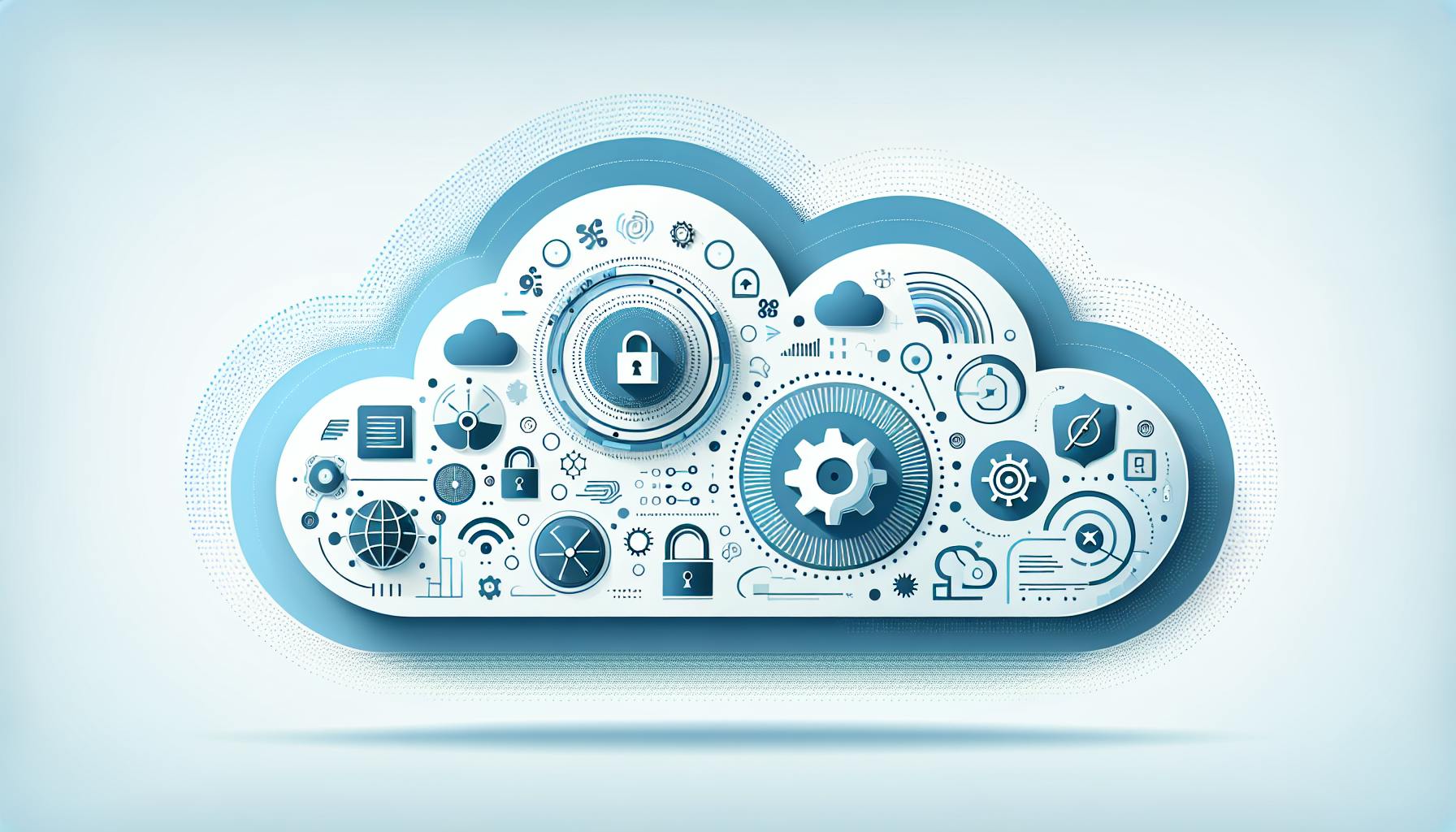Integrating complex enterprise systems can create opacity into critical processes.
By implementing Boomi Observability best practices, organizations can dramatically improve visibility into mission-critical integrations and respond rapidly to issues.
In this post, we'll explore strategies like leveraging AIOps, establishing alerting mechanisms, and enabling ChatOps to unlock the full potential of observability within Boomi's iPaaS.
Introduction to Boomi Observability
Boomi Observability provides real-time monitoring and analytics for Boomi integrations. This introductory section will define key concepts around #observability and outline the benefits of implementing a Boomi Observability strategy.
Exploring Boomi Observability Fundamentals
Observability refers to the ability to measure and monitor the internal states of a system. When applied to Boomi integrations, #observability provides visibility into message processing, failures, delays and overall integration health.
Implementing Boomi Observability brings enhanced visibility into your integration performance through real-time monitoring of:
- Message processing stats like throughput, backlog, errors
- End-to-end transaction tracing
- Integration component metrics
- Environment overviews
With this data, you gain increased awareness into the health and efficiency of critical integrations that power business operations.
Advantages of Enhanced Boomi Monitoring
Implementing #observability for Boomi brings increased visibility, faster issue detection and resolution, proactive monitoring, and data to optimize integrations over time.
Key benefits include:
- Real-time anomaly detection to catch issues before they impact users
- Tools to troubleshoot and diagnose problems faster
- Data and insights to improve integration design over time
- Customized alerts and notifications for proactive monitoring
- Executive reporting on integration operations
By implementing Boomi Observability, you can move from reactive firefighting of integration problems to more predictive, proactive monitoring and management. This prevents business disruptions and provides the visibility needed to enhance integrations over time.
Establishing Observability in iPaaS
Understanding the role of Boomi as an Integration Platform as a Service (iPaaS) and how observability principles apply within this framework is crucial for effective monitoring and management.
iPaaS and Boomi: A Synergy for Observability
The integration of observability within the iPaaS environment enhances the ability to monitor complex workflows and data transactions. As an iPaaS, Boomi provides cloud-based integration capabilities that connect diverse systems and applications. Incorporating observability into this integration platform enables deeper visibility into message flows, data mappings, and overall integration health.
Some key benefits of observability for Boomi users include:
- Real-time monitoring of integration processes and performance
- Automated alerts for integration errors or delays
- Tracing end-to-end message flows across systems
- Understanding system dependencies and bottlenecks
With comprehensive observability, Boomi customers can quickly isolate and troubleshoot issues within integrations to minimize downtime and data errors.
Designing Observable Boomi Integrations
Building integrations with observability in mind from the start will ensure critical paths are monitored. Tips include:
- Using milestone steps within integration processes for tracking key events
- Enabling verbose logging at different stages of message processing
- Planning for correlation IDs and other trace data to follow transactions
These observability considerations help capture vital runtime metrics, errors, and telemetry. Users can then leverage this data for monitoring dashboards, alerts, and troubleshooting.
Other best practices include setting performance baselines and staging observable integrations before production deployment.
Configuring Boomi Logs and Traces
Logs and traces are vital sources of observability data. Users should:
- Enable verbose logging in integration processes to output key runtime metrics
- Configure tracing to track messages and transactions flowing through Boomi
- Send log and trace data to a centralized monitoring platform
With robust logging enabled, users gain visibility into error messages, data mappings, and performance bottlenecks. Distributed tracing tracks messages across all systems, revealing dependencies.
Platforms like Eyer.ai provide aggregation, analysis and alerts for Boomi's observability data at scale.
Establishing Alerting and Notification Mechanisms
Define alert rules triggered by:
- Integration errors and failures
- Transaction delays or SLA breaches
- Abnormal traffic spikes or volumes
- Custom metrics thresholds
Configure notifications to route alerts to appropriate teams like developers, ops, or support for quick resolution. Integrate monitoring platforms with communication tools like Slack, PagerDuty or ServiceNow.
With proactive alerting, customers can stay ahead of Boomi integration issues before they cause system outages or data loss. Observability and alert automation are key for maintaining robust iPaaS performance.
Leveraging AIOps for Boomi Observability
Integrating artificial intelligence for IT operations (AIOps) with Boomi Observability can provide enhanced analytics to improve operational efficiency. By leveraging machine learning algorithms, issues can be predicted and responses automated to minimize disruption.
AIOps: Enhancing Boomi Observability with AI
AIOps utilizes historical monitoring data to establish baselines and detect anomalies in performance metrics. For example, response times for Boomi integrations that consistently average under 500 ms would trigger alerts if they suddenly spike to over 2 seconds. Machine learning models can analyze metrics, logs, and traces to identify the root cause, such as a downstream API latency issue.
By establishing thresholds and patterns, AIOps can automatically trigger alerts and workflows to remediate problems. This reduces the need for manual investigation, accelerates mean time to resolution, and improves IT productivity.
Monitoring Mission-Critical Boomi Integrations
Observability data from Boomi provides visibility into the health and performance of integrations. Metrics expose trends while logs reveal processing details. Traces map the path of data across services.
Prioritizing mission-critical integrations for observability monitoring enables early detection of issues. Slowdowns in critical financial or ecommerce integrations can directly impact revenue and reputation. AIOps models can learn typical traffic patterns and rapidly flag anomalies.
Troubleshooting Boomi Integration Problems
Logs, metrics and traces are invaluable when troubleshooting failures or investigating performance problems. Metrics indicate overall latency while logs show processing steps. Traces follow the request path across all associated services.
AIOps aggregates and correlates the data automatically to accelerate identifying root cause. Instead of lengthy manual analysis, issues can be pinpointed quickly for remediation.
Optimizing Boomi Processes with AIOps
In addition to detecting problems, AIOps can optimize integrations by exposing inefficiencies. The analytics may detect an integration making excessive API calls that could be consolidated. Another integration may have a bottleneck that requires additional processing resources.
This intelligence enables opportunities for cost savings and performance improvements over time. Proactively optimizing processes can also avoid future stability issues.
sbb-itb-9890dba
Advanced Monitoring Techniques for Boomi
Boomi Observability provides robust monitoring and alerting capabilities out of the box. However, integrating the platform with other tools can enhance visibility and enable more proactive management. Here are three techniques to consider:
Streaming Boomi Logs and Metrics
Forwarding Boomi logs and metrics to aggregation platforms like Splunk or Datadog allows correlating performance across all systems in your environment. This gives greater context for identifying issues and their root causes.
To implement this:
- Enable logging in Boomi to capture integration execution data
- Set up a logging agent like Fluentd to forward logs to your aggregation platform
- Visualize and alert on Boomi KPIs alongside metrics from other systems
With aggregated data, you can set alerts that account for systemic performance, not just Boomi in isolation.
Enabling ChatOps for Boomi Alerts
Sending Boomi alerts to Slack or Teams channels allows
Sector-Specific Boomi Observability Strategies
Different industries face unique challenges in observability. Tailoring strategies to meet these specific needs ensures compliance and efficiency.
Healthcare Integration Monitoring with Boomi
The healthcare industry handles sensitive protected health information (PHI) that requires specialized practices to ensure HIPAA compliance. When implementing Boomi observability for healthcare integrations, follow these best practices:
- Configure detailed logging of access to PHI to meet audit log requirements. Boomi provides out-of-the-box logging that can capture user access details.
- Implement role-based access controls restricting PHI data access. Boomi's granular permissions model supports configuring user roles limiting exposure.
- Enable field-level encryption for social security numbers, medical record numbers, and other identifiers in healthcare message payloads. Boomi has native field encryption capabilities.
- Set up alerts triggered by unauthorized access attempts and other policy violations. Boomi allows configuring alerts for security events.
- Use Boomi's API-based integration monitoring to track PHI flows end-to-end. Detailed visibility ensures secure transmission.
Adhering to these #observability guidelines helps healthcare organizations remain #HIPAA compliant while leveraging Boomi's integration platform.
Financial Services Observability with Boomi
Financial services organizations handle sensitive customer data and transactions requiring careful tracking. Follow these tips for implementing observability with Boomi in banking, insurance, and other finance sectors:
- Log all transactions with unique identifiers to enable traceability and auditability throughout systems. Boomi simplifies cross-system transaction monitoring.
- Configure field encryption for personally identifiable information like account numbers, SSNs, and customer names. Boomi's flexible encryption secures data.
- Set up alerts for transaction failures, processing errors, and other issues impacting operations. Real-time alerts from Boomi allow rapid incident response.
- Use dashboard reporting for visibility into peak traffic times, system resource utilization trends, and more. Boomi provides turnkey dashboards.
- Enable fine-grained access controls and system user monitoring to prevent internal data misuse. Boomi has mature role-based access functionality.
With robust logging, encryption, and alerting, Boomi #observability gives financial organizations the data safeguards and visibility required for governance and regulatory compliance needs.
Public Sector Boomi Insights for Observability
Complex government IT environments like federal, state, and local agencies come with specialized security and compliance requirements that necessitate greater observability across systems. Here are Boomi monitoring best practices for public sector systems:
- Maintain detailed audit logs tracking user access, data queries, transactions, and other activities to meet stringent public sector logging mandates. Boomi simplifies unified logging.
- Configure alerts triggered by unauthorized access attempts, policy violations, or abnormal user behaviors to rapidly detect security incidents. Boomi allows granular alert policies.
- Set up dashboards providing easy visibility into system and data usage trends to spot inefficiencies. Boomi has customizable dashboards.
- Implement mandatory multi-factor authentication for any user access to sensitive applications or data per public sector security guidelines. Boomi integrates with leading identity providers.
- Establish a data backup process, with both hot backups and cold storage, to enable resilience and quick disaster recovery. Boomi facilitates robust backup for resilience.
With Boomi #observability, government agencies get the integration visibility, security controls, and compliance traceability required when handling constituent data and transactions.
Conclusion: Mastering Boomi Observability
In summary, implementing observability best practices for Boomi drives IT efficiency, risk reduction and business agility through enhanced visibility. Key takeaways include:
Emphasizing the Critical Need for Boomi Observability
Complex integration environments demand #observability for performance, uptime and security. With #aiops platforms like Boomi, teams gain real-time insights into data flows to quickly detect and resolve anomalies. As noted in the article context, establishing observability is essential for solutions providers seeking to optimize complex IT ecosystems.
Failing to implement adequate observability leaves systems vulnerable to costly outages and data integrity issues. A 2020 Ponemon study found the average cost of IT downtime exceeds $300,000 per hour. By contrast, the Eyer.ai platform leverages machine learning for precise anomaly detection across thousands of metrics. This protects reputation and revenue for partners leveraging Boomi's iPaaS.
Evolving Boomi Observability Approaches
Best practices are evolving rapidly to leverage new data sources, analytics and response automation. Boomi itself continues enhancing its platform with advanced AIOps capabilities like noise reduction algorithms and smart alerting.
Third-party tools like Eyer.ai build further value atop Boomi Observability through features like:
- Automated root cause analysis
- Customizable anomaly detection rules
- API integrations with notification channels
Together, these innovations help teams cut incident response times while reducing alert fatigue.
Boomi Observability's Scalability Across Industries
While regulations and use cases differ, #observability delivers value to every business by empowering integration teams. The Eyer.ai platform, for instance, supports flexible custom dashboards to highlight the most critical metrics for a company's ecosystem. Further customization options exist across alerting thresholds, anomaly detection algorithms and more.
These capabilities make the solution relevant for observability requirements across industries - from retail to healthcare and beyond. In an environment with thousands of operational metrics, observability is the key to maintaining IT resilience no matter the specific use case.



